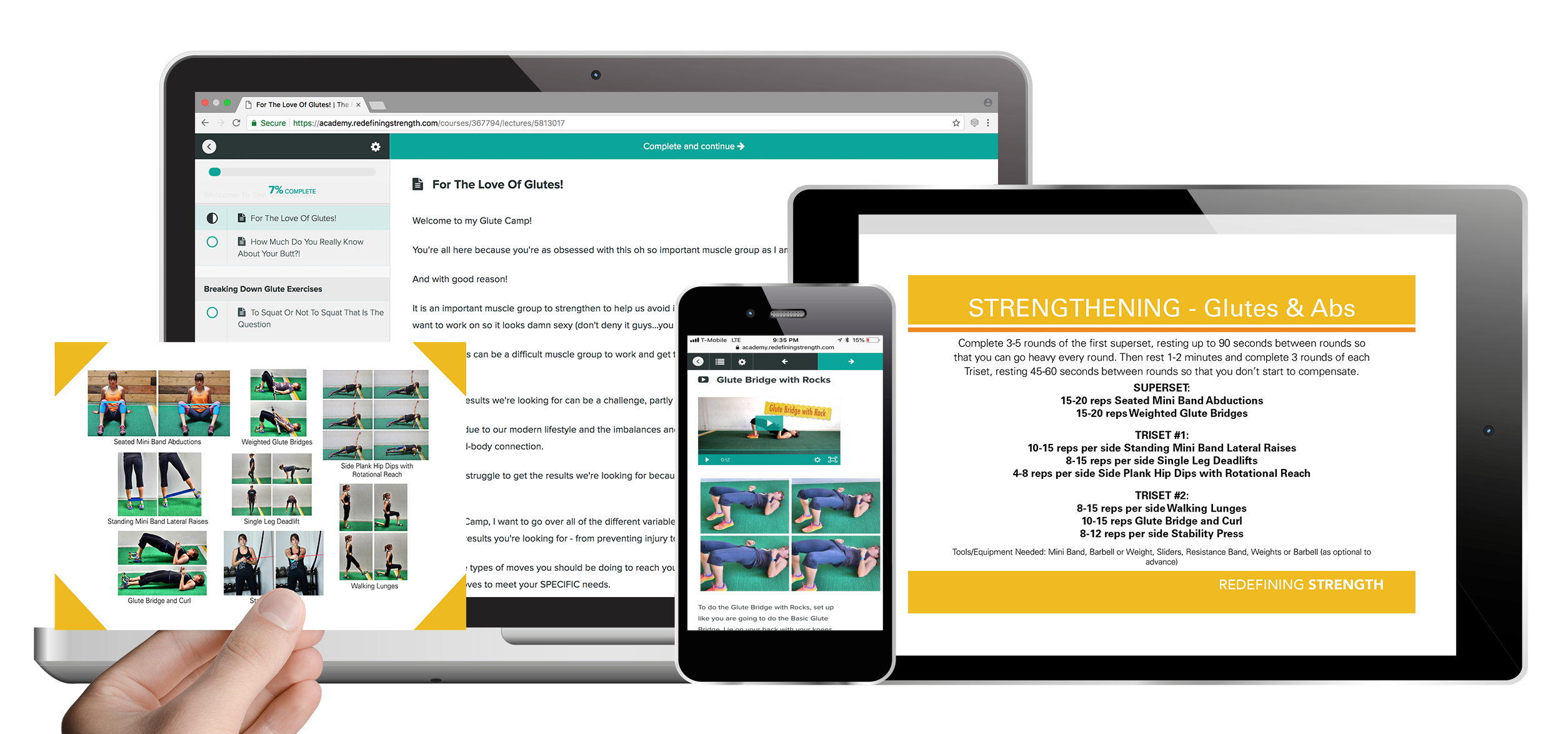And if you're injured, your mind-body connection and recruitment patterns may cause squats to do more harm than good.
Now I'm not telling you to avoid squats, I'm just telling you that you can't ignore the entire process if you want results!
First, you need to FOAM ROLL.
Often when our glutes are underactive it is because our hip flexors are tight. The first step to helping us activate our glutes properly is to relax the overactive, tight muscle - aka our HIPS!
That means first foam rolling or using self-myofascial release to relax the muscles so that you can restore proper flexibility and even joint mobility. You may even find it helpful to roll other overactive muscles that tend to want to engage during movements where your glutes should be working, such as your hamstring and lower back. The more you can relax those muscles so they aren't overexcited, the easier it can then be to establish a mind-body connection with those underactive muscles!
After you foam roll, you then want to work to improve your flexibility and joint range of motion.
STRETCHING is the key second piece of the puzzle!
When you are stretching before your workout to loosen muscles and improve your flexibility and mobility, you want to use active or dynamic stretches. You want to work the joint through a range, often even the range of motion or movement you plan to use during your workout. And you want to mobilize the joint as fully as possible.
Ever notice if you skip your warm up how a couple of rounds in you can squat deeper? How you feel warmer and more mobile?
Stop wasting a few rounds of your workout! Start using dynamic stretching as part of the process!
Using stretching to improve your flexibility and joint mobility can help you more easily activate and recruit those glutes to avoid compensating! When you stretch tight and shortened hips, you make it easier for your glutes to fire! (And if you have Anterior Pelvic Tilt, stretching is super key to help you return to a neutral alignment!)
Once you stretch though, you can't stop there. Often we stretch and roll and then wonder why all of our injury prevention and mobility work never seems to "stick" or last.
And it is because we just keep perpetuating those same patterns of overload and overuse.
Once you foam roll and stretch, you need to ACTIVATE so the correct muscles start working as they should!
Whether you're looking to prevent injury or want strong, toned glutes, these activation moves can NOT be skipped. These more isolated, glute-focused movements help you establish the mind-body connection and get those glutes firing.
They help you improve and MAINTAIN that flexibility and mobility you worked for by getting the right muscles, aka your glutes, carrying the loads they should. These moves not only start to strengthen your glutes but they also help you make sure your glutes then fire correctly during more compound movements.
And this is your chance to make sure you've activated different fibers of all three glute muscles!
While I can't say enough about activation for injury prevention, especially for all of you cyclists and runners, I also can't say enough about it if you want to tone or build those glutes! If sculpting sexy glutes is part of what you want, and there is nothing wrong with that, don't ignore these isolated exercises!
From an aesthetic standpoint, these moves can even be key if you're struggling to get the glute results you're looking for without building up your legs further.
Once you've done the foam rolling, stretching and activation, you can't forget about the strengthening.
Strength training is key if you want to be functionally strong to move and look better!
This is where you focus on adding more weight, spending more time under tension, using more compound moves. This is where you work to build strength through a full range of motion and work your glutes in every plane. This is where you can use squats in your programming.
But you shouldn't just stick with squats!
You want hip hinging movements to improve hip extension, abduction movements, external rotation movements, and hip hyperextension movements. You want to work your glutes with exercises that utilize all of their different functions! You even want to work them in ways that force them to stabilize because they are such an important hip stabilizer!
You want to use these compound moves to build functional strength so you can run faster, lift more and avoid injury! And heck, strong glutes look damn sexy too!
Using all four steps you can not only avoid and correct compensations and imbalances that may lead to injury but you can also make sure your glutes are firing and carrying the loads they should during your workouts so you get better and FASTER results!
So how do you include all four parts in your workout routine? And how do you create a glute training routine that meets YOUR SPECIFIC NEEDS?
That's how my Glute Camp can help!









